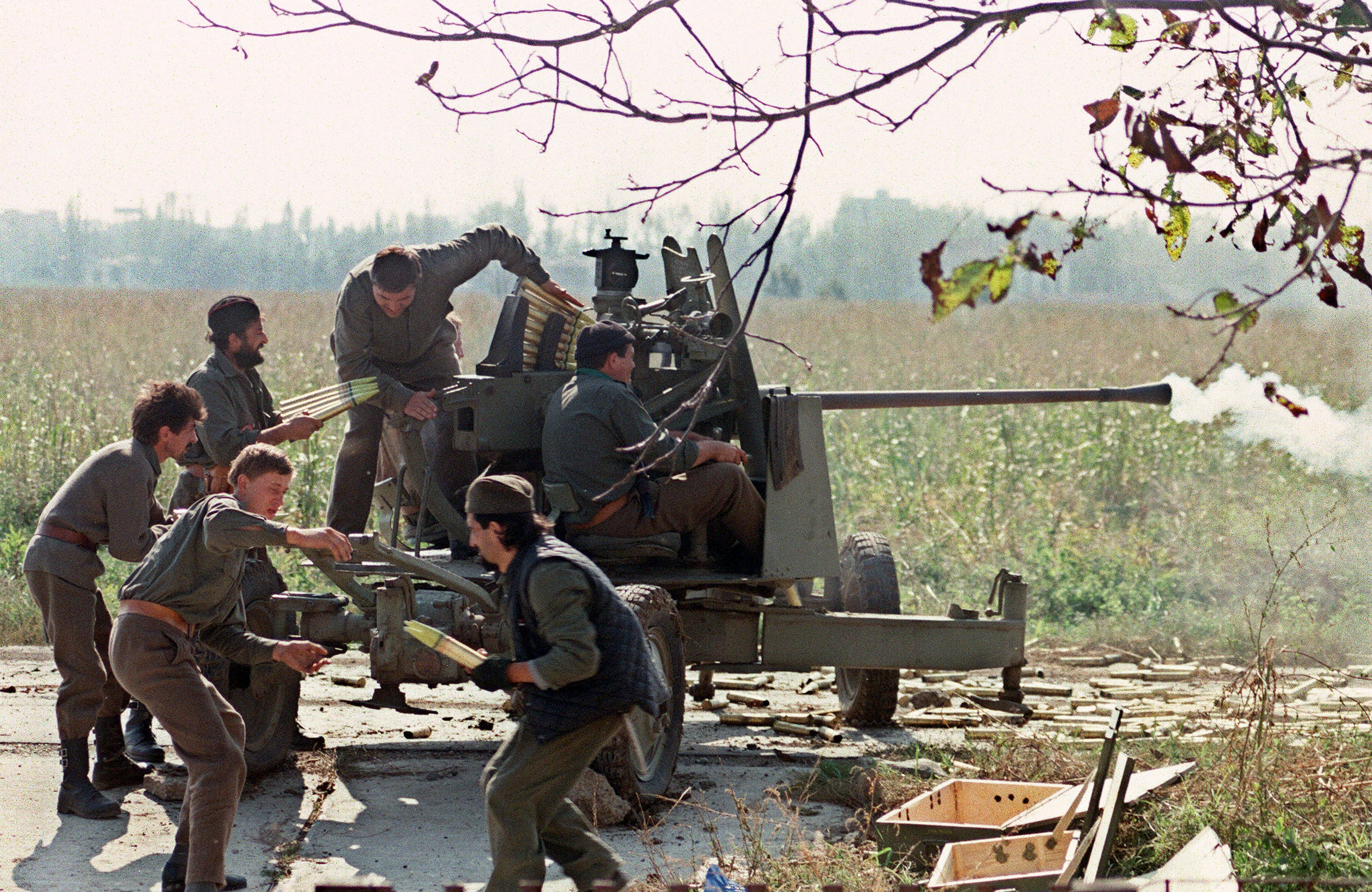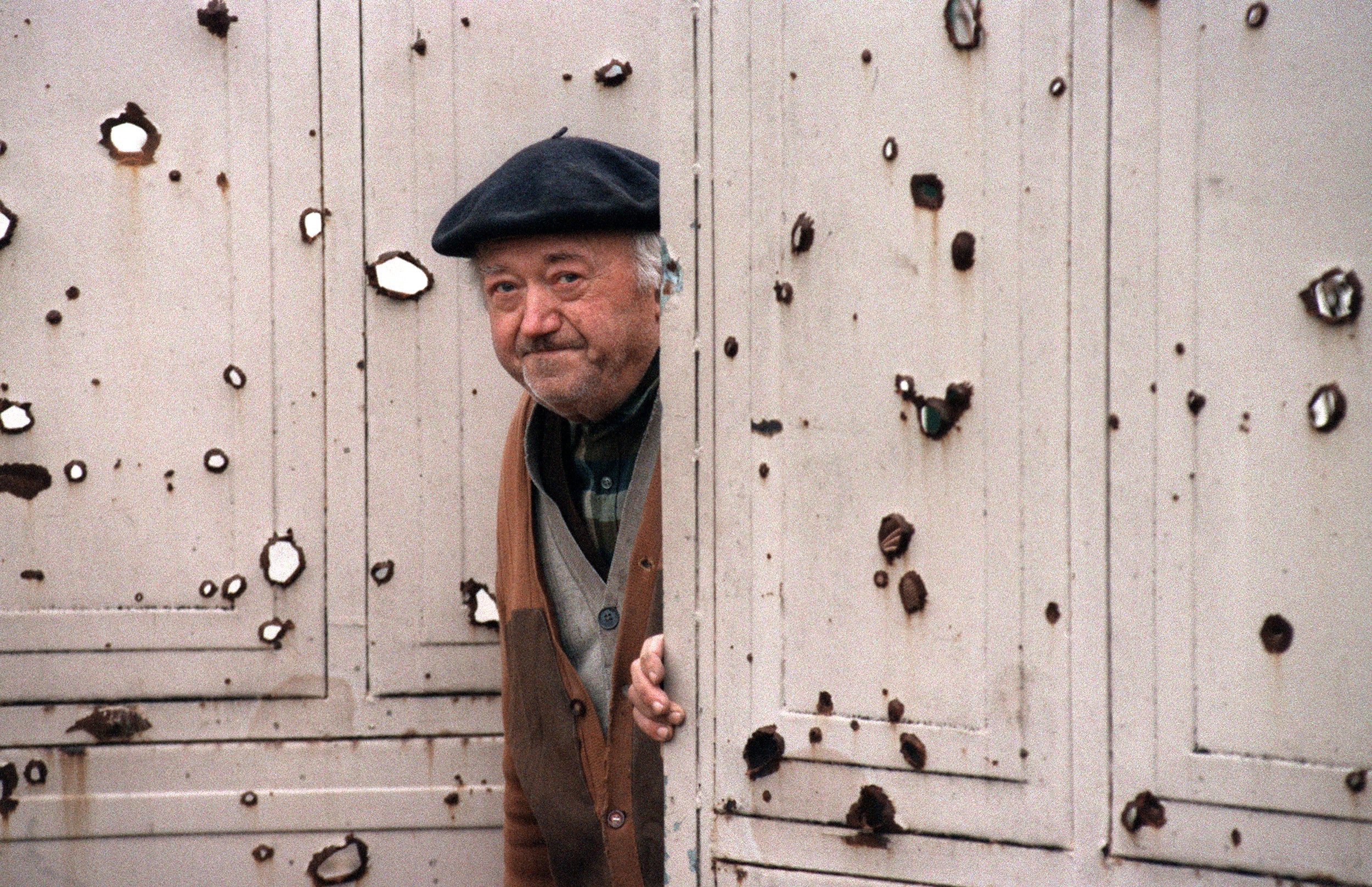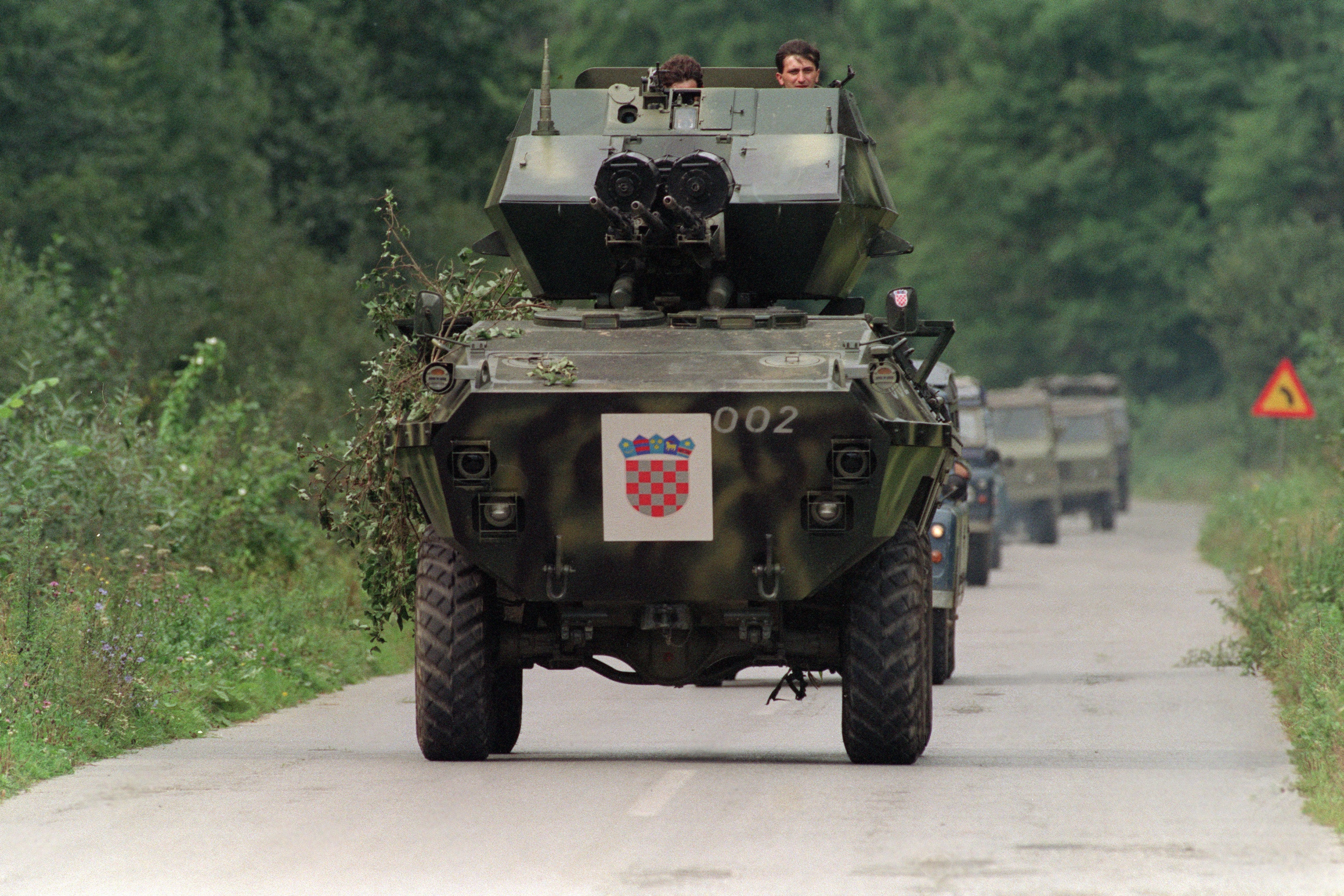Following the devil’s tracks: The legacy of Cardinal Stepinac
Part 2 – June 1994: It’s strange how almost every step we took in Bosnia or Croatia, we returned to the Second World War, Tito and the partisans and the Nazis and the Ustashe, writes Robert Fisk


How cruel are the distinctions of nationality. I left those women – who have neither passport nor nation, running water nor gas – still trapped in their ruined Muslim enclave, and drove down to the Adriatic and into Croatia with no more than a wave of my British passport. Four hours later, at Split, I climbed into a Croatia Airlines Boeing 737 for the 50-minute flight to Zagreb, on which I was served with red wine, smoked salmon and chocolates.
Yet even here, on this modern aircraft, the sinister message of ex-Yugoslavia was waiting for me. When I opened the Croatian Airlines inflight magazine it was ranting about the iniquities of communism, about “political manipulation” by the Serbs, of how “Serb aggression” had closed the airline. Inflight magazines are the blandest publications in the world, but here, on Croatia Airlines, they smelt of hate.
Few Croats, however, would have argued with the magazine’s contents. Croatia is in the western bit of ex-Yugoslavia, its chunk of Bosnia effectively included in the new federal authority and 30 per cent of the state of Croatia still occupied by local Serbs supported by Belgrade. The remaining 70 per cent of rugged coastline and gentle interior looks every day more Austrian, more German, as wealth creeps in from the European superpower which helped to give it birth. Yet Croatia is not in love with the west, least of all with the United Nations, whose troops have installed themselves in the 30 per cent of occupied territory without handing it back to the Croats.
Which is why, around the UN headquarters in Zagreb, there is growing a long and accusatory wall of red bricks, built by the “Mothers of Vukovar”, women from the northeastern Croatian city which fell to the Serb army in 1991. Upon each brick is painted a name – “Majta Zdravko 12/9/91”, “Mijo Nikic 2/9/91” – thousands of them, all Croats who died or who went “missing” in the siege and subsequent collapse of Vukovar. The mothers blame the UN for failing to return to Vukovar or find their missing. The wall thus implies the guilt of the international community, which sends out its orders to more than 37,200 of its soldiers in Bosnia and Croatia from the old barracks building behind it.
Wandering along the wall, I found still burning candles stuck in the niches, rosary beads wrapped around the bricks. Between two bricks, I discovered a photograph of Cardinal Alojzije Viktor Stepinac printed on a mass card. This, it seemed to me, was a strange figure to be linked to the genocidal Balkan war of 1991-94.
Cardinal Stepinac led the Catholic Church in Croatia throughout the Second World War when, between 1941 and 1945, the Independent State of Croatia, under the fascist Ante Pavelic, murdered up to 700,000 Serbs and Jews. After the war, a show trial had condemned Stepinac to prison for collaboration; Serbs still regard him as a major war criminal who did nothing to prevent a bloodbath so terrible that even the German army intervened to stop the slaughter; most of the victims were killed with axes or beheaded with saws. Next year, the Croats hope that the Pope – a very right-wing, anti-communist Pope – will canonise Stepinac. How could these people blithely ignore the horrors that Croat fascists once perpetrated against their fellow Slavs and against the Jews? At the end of the mass card I’d found in the wall was an address – “Kapta 31” – which turned out to be the office of the present cardinal of Croatia. The cardinal’s secretary directed me to Bishop Djuro Koksa, who would talk to me about Stepinac.
This was not a religious war, the bishop said. Serbs are not as religious as Croats. They don’t have religion in the same way. Orthodoxy is not a religion
I found the good bishop in his office near the cathedral, a rotund and rather overweight cleric whose sojourns in Huddersfield and Northern Ireland had left him with the ability to imitate, quite flawlessly, the accents of Yorkshire and Belfast. He also turned out to be an old friend of Stepinac; and, in his cool, high-ceilinged study, the demon of nationalism was not far away.
Stepinac, Koksa said, was a holy man, holier than any other cardinal of Croatia. What had been said about his war record was “lies – all lies”. So I quoted the words with which this holier-than-holy man greeted the birth of Pavelic’s vicious state: “The times are such,” Stepinac had announced, “that it is no longer the tongue but the blood which speaks ... It is easy to discern the hand of God at work...”
The bishop interrupted: “Yes, yes, but in this same speech he warned against Ustashe violence. He complained about this to Pavelic. He saved many Serb lives. And Jewish lives.”
But the Catholic Church under Stepinac had been involved in atrocities, I replied: what about Miroslav Filipovic, the Franciscan who formed the habit of tying captured Serbs to haystacks and burning them alive, all the while asking them if they believed in God?
“A lie – lies – all lies,” the bishop roared again. “This was Tito propaganda... Anyway, Filipovic was defrocked...”

Why, I asked? “He was involved in criminal politics,” the bishop replied quietly.
This was not a religious war, the bishop said. “Serbs are not as religious as Croats. They don’t have religion in the same way. Orthodoxy is not a religion. You have to stay a long time with them to discover what they mean by religion. It’s a different thing altogether in this part of Europe – the Croats are an occidental people and occidental people take religion seriously.” The demon of nationalism, it seemed, was being replaced by the demon of faith.
But the bishop wanted to condemn the treatment of Muslims. “It is not right that the Muslims should be persecuted. The Muslims should not be treated like Hitler treated the Jews. How can we understand the animals who raped the Muslim women? The Muslim women were saying to them, ‘Don’t rape us in the mouth – rape us in the normal way.’ Can you understand how people could reach such a stage? It’s scandalous. Beasts, wild beasts...”
This was so extraordinary an outburst that I asked the bishop through our interpreter to repeat it in Croatian. To her embarrassment, he did. “I don’t want to translate this,” she said. “He just says the women didn’t want to be raped in the mouth.” Was he criticising the women or the rapists, I asked? The bishop roared back: “Wild beasts...” The interpreter seemed as shocked as I was by this weird outburst. We remained unsure at whom his anger was chiefly directed.

“As we talked, I caught sight of a bust of Stepinac in the back of the bishop’s office. Koksa deemed him “a saint” already. But, I asked, was not the canonisation of Stepinac – when no other Croatian cardinal had been canonised in living memory – just part of a subtle campaign to legitimise the fascist regime of Ante Pavelic? “Nonsense,” the bishop replied, with a curious twinkle in his eye.
In that same Vukovar wall, I discovered a letter sent by a Serb woman living in Zagreb to her old and dying father inside Serbian Bosnia. Strangely, I found the woman living 400 yards away. She had taken the letter to the Red Cross for posting and had no idea how it made its way instead to the “Croat wall”. Her father – an artist and pacifist now suffering from cancer and trapped behind the front lines – had refused to take sides in the Bosnian conflict as surely as he had refused to fight in the Second World War. Could a Serb who lived among Croats explain to me, I asked, why Slavic people fought so viciously among themselves?
She smiled at me, almost with pity. “It is because we are so alike,” she said. “In Bosnia I cannot tell the difference between a Serb, a Croat or a Muslim. We have the same faces. We are so alike. You see, when two brothers fall out, they will always hate each other more than strangers hate each other. Who knows what we Slavs hide in ourselves? Now the Serbs won’t give my Serb father an exit visa... maybe they do this because they know he wouldn’t join the partisans in the Second World War.”
It’s strange how almost every step we took in Bosnia or Croatia, we returned to the Second World War. Every attempt to ask about the future was stymied by men and women who wanted to talk about Tito and the partisans and the Nazis and the Ustashe. Like the videotape of the Mostar bridge, you could press rewind and rebuild the bridge, go back through the chambers of collective memory, to the evils of the past. But fast forward did not seem to exist.
In the lobby of the Esplanade Hotel in Zagreb I noticed, of all people, the actor Michael York. He was here to make a film based on the supposed apparition of the Virgin in 1981 to Croatian children at Medjugorje. Beside him stood a tall man in military uniform with a shaven, bullet-shaped head and pale blue eyes whom York introduced as his “bodyguard”. He was, in fact, the Croatian fighter Kresho (the abbreviation of his first name), nicknamed “Turbo Ustashe” by the Serbs whom he fought and killed in large numbers at Vukovar in 1991. Only 24 of his 137 men survived in one of the most brutal shooting battles of the war. He showed us some albums filled with photographs of his destruction of a Serb tank. The last picture showed Kresho standing next to the carbonised skeleton of a Serb soldier.

Here was a man whose experience of human cruelty might provide some explanation of fraternal hatred. “One day, during the war, I found a little child, a girl, about two-and-a-half-years old,” he told me later. “She had been killed by the Serbs “with a knife in the throat, and then she had been impaled on steel railings. In one house I found an old man, about 70, with his fingers cut off. They had stuffed his severed fingers in his throat and suffocated him that way. After that there was a massacre in Lika and one of my uncles was murdered there. I was very angry when I saw these things.
“The first time I killed was 22 July 1991. I was eye to eye with a Chetnik Serb soldier. He ran right up to me with his rifle and then suddenly realised he had forgotten to load his rifle. So I walked up to him with my gun.”
He slapped his hand on his revolver. “I walked up with my gun and I put the muzzle of the gun just below the Serb’s left eye. And I said to him: ‘Tell me, brother, why do you think it’s necessary to make me do this?’ Then I shot him, in the face. He was dead immediately. It was good to do it with a big gun. Bang. But for 10 days after that, I couldn’t sleep. I chain-smoked and eventually I went to see our army doctor. He said that I would have to go through more things like this and then I would be alright. Then my best friend was killed and after that everything was clear for me.”
Read Part 1 of Robert Fisk’s June 1994 report from Mostar here






Join our commenting forum
Join thought-provoking conversations, follow other Independent readers and see their replies
Comments